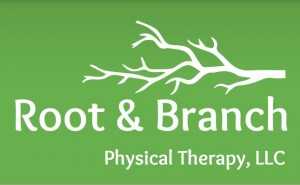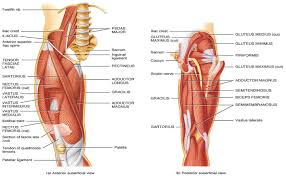Please enjoy a guest post written by the latest addition to Thrive Massage and Bodyworks (the space that Written on the Body resides in).
I have been seeing Dr. Alex de la Paz for the past couple of months to address chronic jaw and neck pain and I have been impressed with his intuitive and gentle style as well as the lasting results we have achieved over just a few visits. This is what inspired me to ask him to write a post for us. Our goal at Written on the Body is to help each of you find freedom from pain and stress and I believe that Alex may be able to help accelerate this process in addition to your regular massage and acupuncture treatments. Bonus that he is a genuinely lovely person AND is located in the same building so you can easily have your health care team all in one place!
When Should I see a Physical Therapist?
Should I stretch before I exercise?
Is it OK to be sore after I exercise?
How do I know if I am developing an injury?
Have you ask yourself one of these questions? Do you exercise and wonder if that “tightness” or “soreness” is a problem? You may be experiencing normal and expected exercise-induced muscle soreness. However, you may be experiencing symptoms associated with an over-use injury, either due to a heightened activity level or a dysfunctional movement pattern. This article provided by Root & Branch Physical Therapy will help identify and differentiate between normal and abnormal responses to exercise, with the intent of informing and empowering the community on the importance of injury prevention and management throughout a lifespan.
“Normal” and “Expected” Soreness
During and after exercise it is expected for muscles to fatigue and feel either “tight,”
“sore” or “achy;” especially if the goal of the exercise is to improve muscle strength and/
or size. This phenomenon is called Delayed Onset Muscle Soreness (DOMS) and could
last 1-3 days after you exercise. Delayed muscle soreness should be expected in the body
part or region of the body that was producing movement or force. For example, if
someone perform exercises involving pushing or pulling motions with their arms, it
would be expected to have muscle soreness in the shoulders, chest and arm regions.
During full-body movement patterns, such as running or playing basketball, global
DOMS is to be expected in areas throughout the entire body, especially after performing
a newly-introduced activity.
“Abnormal” and “Unexpected” Soreness
Even though soreness is an expected outcome of exercising, there are times where
soreness could be a clue to whether or not you are producing a poor movement pattern
and/or developing an injury. Below are some subjective reports that would suggest that
someone is at risk for developing an injury:
• Soreness only on one side of the body
o Potential cause: asymmetrical positioning or muscle function
o Example: only one calf muscle feeling sore or tight after a run
o Our approach: identify why and when the sore muscle may be stressed
during your running pattern
• On-going muscle tightness or joint stiffness
o Potential cause: over- or under-active muscle activity
o Example: sensation of hamstring tension despite stretching and/or foamrolling
constantly
o Our approach: identify if the tension felt is due to soft tissues that are
over-active and short or under-active and long
• Head, face, jaw, neck or spine soreness or stiffness
o Cause: dysfunction of the core, breathing or jaw muscles
o Example: low back pain or headaches during or after specific activities
o Our solution: identify why tension and strain is being distributed at
specific locations during certain activities
Common Regions Involved in Compensation
• Calves and feet, fronts and sides of thighs, front of the hips (hip flexors), low
back area, accessory breathing muscles of the neck, wrists and elbows, face and
jaw muscles and the diaphragm (holding your breath).
If you or anyone you know is experiencing symptoms from the “Abnormal” and
“Unexpected” Soreness category listed mentioned above, then you would benefit from an
injury and movement screen to identify your current risk for developing an injury. Also, if
your commonly experience tension, soreness or pain in the “Common Regions Involved
in Compensation” list above, then you as well should benefit from screening to identify
your injury risk.
Root & Branch Physical Therapy provides FREE 30-minute movement and injury
screens for all individuals. If you indeed are identified as being at risk for injury, you may
benefit from a 90-minute comprehensive Physical Therapy evaluation with a Doctor of
Physical Therapy. Please contact Alex today if you have further questions about how
Physical Therapy might help your specific situation. You may also schedule via phone,
text, email, our website or the MINDBODY app.

Dr. Alex de la Paz, PT, DPT
Owner & Physical Therapist
Root & Branch Physical Therapy
2808 NE MLK Jr Blvd, Ste C
Portland, OR 97212
Cell: (503) 577-0318
Fax: (503) 710-9221
Email: rootandbranchPT@gmail.com
Website: www.rootandbranchPT.com
Is driving a stick shift causing you to have knee pain?
I am new to the world of manual driving, a late bloomer you might say. After my partner’s truck was declared totaled we needed something affordable, able to hold a lot of people and easy on the wallet when it comes to gas. That’s how we ended up with an old grocery getting manual transmission Toyota Camry, which meant I had no choice but to jump on the stick shift bandwagon. I am ashamed to admit that this was my third attempt at learning to drive a stick, I had never quite gotten the hang of it. Third time truly is a charm and I am now finally mastering shifting gears without killing the car.
I have had some unexpected side effects pop up since I began driving a manual transmission vehicle: Knee pain….and since I have become aware of it I remember to check in with my massage clients about the type of car they are driving when they complain of knee pain in their sessions. I have noticed a common thread over the past few months, that many of us in the stick shift club are suffering with the same left knee aches and pains.
Here are a couple of the reasons why:
-
Weakened over-stretched glut muscles and tight quads: Sitting for long periods in general causes the back of your body to soften while the muscles in the front of your body become tighter and shorter creating a muscle imbalance which can lead to the structure of your body to be pulled out of alignment. This can lead to all sorts of other issues including low back, hip and knee pain.
-
Muscular imbalance in the legs: When you drive a manual transmission your left leg and right arm end up doing a lot of work while the left arm and right leg tend to be more stationary with small repetitive movements. The left leg is often in an active position with the foot hyper flexed or extended to operate the clutch which creates tension all the way up through the hip. This can cause major imbalances in the muscles that attach to the knee such as a tight tibialis anterior as well as the outer edge of the gastrocnemius. We have a lot of muscles attaching at the knee and if they get tight it can pull everything out of alignment causing you to feel pain. For me it presents itself on both the inner and outer edges, the back of my left knee as well as the outer edge of my left foot.

What can you do?
-
-
Pay attention: Are you allowing your left knee to splay out to the side or holding it really tightly in toward your right leg? Try to relax and find a balance where your knee is straight and relaxed.
-
Are you using muscles unnecessarily? I tend to hold my foot flexed rather than relaxing it to keep it off the clutch when I am driving around town. This causes undue stress on the muscles in my leg and increases the pain in my knee.
-
Take care of yourself! Rest, exercise, drink plenty of water, stretch! and get bodywork:)
The moral of the story is, if you pay attention to your driving patterns you will start to find the movements that are causing your pain and then it will be easier to correct them. Knee pain can have all sorts of underlying causes and driving a manual transmission may just be a small part of the problem. If you find that making small changes in your driving posture helps, awesome and if not it may be time to consult a health care professional to make sure there aren’t more serious issues.
Have you noticed any other issues from driving a manual transmission? I would love to hear about your experience! Please feel free to share in the comments or email us at wonthebody@gmail.com. Thanks so much for reading and have a great week!
Visit our website to learn more about bodywork: www.portlandmassagestudio.com



